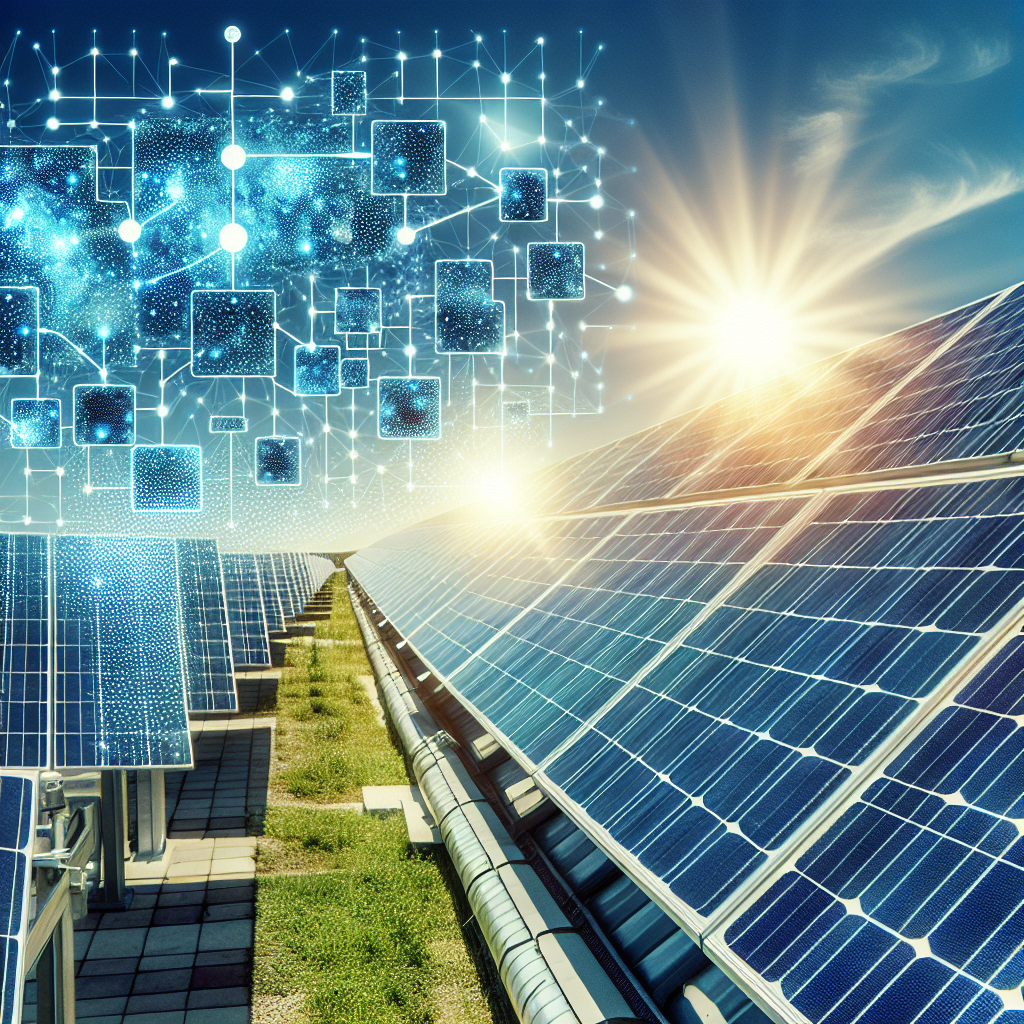In recent years, the demand for renewable energy sources has been on the rise due to concerns about climate change and the depletion of fossil fuels. Solar energy, in particular, has gained popularity as a clean and sustainable alternative to traditional forms of energy generation. However, one of the challenges facing the widespread adoption of solar energy is the efficiency of solar panel installations.
Solar panels are designed to convert sunlight into electricity, but their efficiency can be affected by a variety of factors such as shading, temperature, and dust accumulation. To address these challenges, researchers and engineers have turned to machine learning algorithms to optimize the performance of solar panel installations and enhance energy efficiency.
Machine learning is a branch of artificial intelligence that involves developing algorithms and models that can learn and make predictions based on data. In the context of solar energy, machine learning algorithms can be used to analyze large amounts of data collected from solar panel installations and make recommendations for improving efficiency.
One of the key advantages of using machine learning in solar panel installations is its ability to adapt and learn from new data in real-time. This means that as conditions change, machine learning algorithms can continuously adjust and optimize the performance of solar panels to maximize energy generation.
There are several ways in which machine learning can be used to enhance energy efficiency in solar panel installations:
1. Predictive maintenance: Machine learning algorithms can analyze data from sensors installed on solar panels to predict when maintenance is needed. By detecting potential issues early on, maintenance can be scheduled proactively, reducing downtime and ensuring optimal performance.
2. Shading analysis: Shading from trees, buildings, or other obstructions can significantly reduce the efficiency of solar panels. Machine learning algorithms can analyze satellite imagery and other data to predict shading patterns and optimize panel placement to maximize sunlight exposure.
3. Temperature optimization: Solar panels are more efficient at lower temperatures, so it is important to monitor and control the temperature of panels to maximize energy generation. Machine learning algorithms can analyze data from temperature sensors and adjust cooling systems to maintain optimal operating temperatures.
4. Dust detection: Dust and dirt accumulation on solar panels can reduce their efficiency. Machine learning algorithms can analyze images of solar panels to detect dust build-up and schedule cleaning accordingly.
5. Energy forecasting: Machine learning algorithms can analyze historical weather data, solar panel performance data, and other factors to forecast energy generation for a given time period. This information can be used to optimize energy storage and distribution, reducing waste and maximizing efficiency.
Overall, the use of machine learning in solar panel installations has the potential to revolutionize the way we generate and use renewable energy. By leveraging the power of data and algorithms, we can maximize the efficiency of solar panels, reduce costs, and promote sustainability.
FAQs:
1. How does machine learning improve energy efficiency in solar panel installations?
Machine learning algorithms can analyze data from sensors, weather forecasts, and other sources to optimize the performance of solar panels. By predicting maintenance needs, optimizing panel placement, controlling temperature, detecting dust build-up, and forecasting energy generation, machine learning can enhance energy efficiency in solar panel installations.
2. What are the benefits of using machine learning in solar panel installations?
Some of the benefits of using machine learning in solar panel installations include improved energy efficiency, reduced maintenance costs, increased energy generation, and enhanced sustainability. Machine learning algorithms can adapt and learn from new data in real-time, making them ideal for optimizing the performance of solar panels.
3. How can I implement machine learning in my solar panel installation?
To implement machine learning in your solar panel installation, you will need to collect data from sensors, weather forecasts, and other sources. You will also need to develop or use existing machine learning algorithms to analyze this data and make recommendations for optimizing the performance of your solar panels. Working with experts in machine learning and solar energy can help you develop a customized solution for your specific needs.
4. Are there any challenges to using machine learning in solar panel installations?
Some of the challenges of using machine learning in solar panel installations include the complexity of developing and implementing algorithms, the need for high-quality data, and the potential for errors or inaccuracies in predictions. However, with the right expertise and resources, these challenges can be overcome to achieve significant improvements in energy efficiency.
5. What is the future of machine learning in solar panel installations?
The future of machine learning in solar panel installations looks promising, with ongoing research and development focused on improving algorithms, data collection methods, and integration with other technologies such as Internet of Things (IoT) devices. As machine learning continues to evolve, we can expect to see even greater improvements in energy efficiency and sustainability in the solar energy industry.

